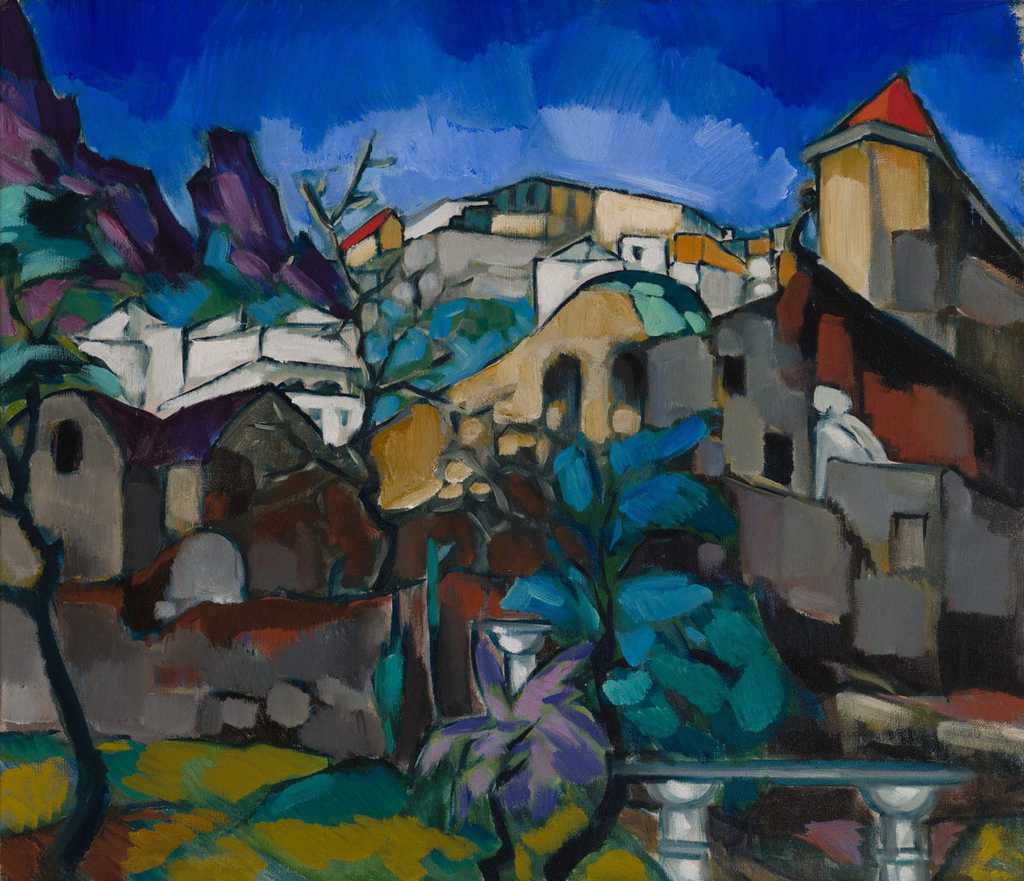
Konrad Mägi yearned time and again to go abroad. It has been recalled that Mägi’s so-called land of his dreams was Spain. He never made it there but the exoticism of Southern Europe strongly attracted him. Even during the First World War, Mägi hoped that he would soon get the chance to travel abroad, yet the pause turned out to be longer than expected. It was not until the early 1920’s that he could undertake a longer trip, which was his first since returning to his homeland in 1912. He planned a trip to Italy via Berlin, remaining abroad from October of 1921 until the autumn of 1922.
In previous years, Mägi had moved more and more towards landscapes where troubled and tense moods were prevalent. It is believed that the overall edgy atmosphere in association with wars and revolutions caused this. Additionally, Mägi had been active in starting up the Pallas Art School, which proceeded with difficulty and caused Mägi even more edginess and discontent. A new period arrived in Konrad Mägi’s creative work with this trip abroad, especially with the paintings completed in Italy or completed later in the studio on the basis of impressions from Italy. Upon his arrival, Mägi already sent a postcard in which he gave notice that he was “feeling excellent and the will to live and do something more – here I feel that life has a purpose.”
First and foremost, a certain abatement took place in his Italian paintings. The expressionist and sombre tones of his previous paintings were replaced by considerably more scenic means of expression.
Mägi sent a postcard to Estonia in January of 1922 on which he wrote that “here in the near future I will travel south – perhaps to the island of Capri.” He arrived on the island in early March and wrote from there: “I arrived on Capri safe and sound. The island is divine.” He remained on Capri for about a month and completed some ten paintings there.
Konrad Mägi’s Capri motifs are filled with a romantic glow, yet interestingly, Mägi seeks something in them both compositionally and in terms of colouring that he had not done before. In this painting, for instance, we immediately notice how the earlier openness of southern Estonian landscapes, or the intimacy of views of Saaremaa, has been replaced by a certain repletion. Mägi no longer looks at a landscape panoramically or cosily, rather he steps over to it and sets about dividing it up. Suddenly, the view is given rhythm by the most disparate forms, transitions, lines and arcs. Mägi skilfully balances in the name of the unity of the picture space, yet that does not prevent him from intersecting, discontinuing and breaking. Not a single motif is completed here. It is as if they all start and end somewhere in progress, yet the whole is perhaps even more harmonious than in some earlier paintings. But then Mägi wipes the sky clean. We do not see clouds there but only broad brushstrokes drawn in different directions that emphasise the loftiness of the whole view as they rise upward. Mägi has made the colouring somewhat darker, but at the same time bright yellowish tones return in his Capri works. He tended more to avoid those tones in his Pühajärve views or tore them apart as tones of apocalyptic explosions. Mägi really appears to have found some sort of peace on Capri, first admittedly dismantling the world into little puzzle pieces of different shapes, yet then carefully fitting them together into a new harmonious whole and placing that new world under a pacified, mild sky.